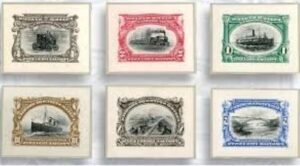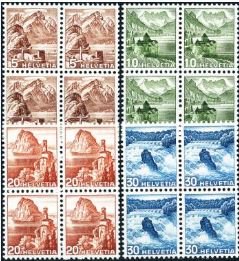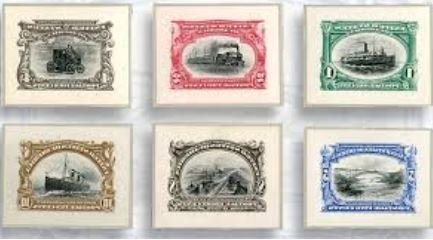Stamp collecting, known as philately, is a hobby that attracts enthusiasts for its intricate blend of history, art, and sometimes even mystery. One of the more perplexing—and intriguing—elements of stamp collecting is understanding stamp color variations. While the concept might seem simple at first, the reality is that stamp color variations can range from subtle differences to highly significant and rare finds. For some collectors, this represents an opportunity for discovery and deeper knowledge, while for others, it can become a source of frustration and confusion. So, is understanding stamp color variations a valuable insight that enhances the hobby, or is it an overwhelming challenge best left to experts?
In this article, we’ll explore the complexities of understanding stamp color variations, examining how these differences occur, why they matter, and whether they ultimately add value or confusion to the world of stamp collecting.

What Exactly Are Stamp Color Variations?
Before delving into whether understanding stamp color variations is helpful or daunting, it’s essential to define what these variations are and how they come about. In short, stamp color variations refer to the differences in the ink colors used during the printing process that result in stamps appearing in different shades or hues.
These variations can occur for several reasons:
- Ink and Printing Plate Variations: The most common cause of stamp color variations is the use of different batches of ink or changes in the printing plate over time. A small batch of ink might produce a slightly different shade, or a worn printing plate may lead to color shifts.
- Environmental Impact: Over time, stamps can experience color changes due to exposure to sunlight, humidity, and other environmental factors. Older stamps, especially those that have been stored improperly, are more likely to show noticeable color variations due to fading or oxidation.
- Deliberate Changes: In some instances, stamps are deliberately printed in different colors to commemorate special events, to mark the release of a new series, or to address design issues from a previous printing.
- Printing Errors: Sometimes, a printing error causes unintentional color variations. For example, a stamp might be printed with the wrong ink color or misaligned printing plates, leading to unique color discrepancies that can become highly sought after by collectors.
The Value of Understanding Stamp Color Variations
For many collectors, understanding stamp color variations adds considerable value to their collections. The ability to identify and appreciate these variations can enrich a collector’s experience and even increase the worth of their stamps. Here’s why:

1. Increased Rarity and Value
One of the most compelling reasons to understand stamp color variations is that it can significantly impact the value of a stamp. In certain cases, a minor color variation can make an otherwise common stamp incredibly rare and valuable. A prime example of this is the 1918 “Inverted Jenny” stamp, which features an error where the plane image was printed upside down. While this is a rare misprint, certain color variations can make even the most common stamps more valuable—sometimes more so than the regular issues. Knowing how to spot these color shifts can be the difference between acquiring an ordinary stamp and uncovering a rare collectible.
2. A Deeper Understanding of Printing History
Many collectors take pleasure in the history behind their stamps, and understanding stamp color variations can give them a deeper appreciation of the printing processes that produced them. For example, changes in ink or color variations often reflect the technological advancements and printing techniques of a particular era. In the early days of stamp production, the printing process was far less precise than today’s methods, which led to more noticeable color shifts. Understanding these variations can provide valuable insights into how printing technology evolved and how different nations approached stamp production.
3. The Challenge of Collecting
For serious philatelists, understanding stamp color variations provides an additional challenge to make the hobby more rewarding. Some collectors focus entirely on color variations, seeking to complete their collection by acquiring all known shades of a particular stamp issue. In many cases, finding the correct color variant of a stamp requires careful examination, research, and sometimes even consulting other collectors or experts. For those who enjoy a more intricate collecting challenge, this can add an exciting layer to the pursuit.
4. Aesthetic Appeal
Stamps are often valued not only for their rarity or historical significance but also for their beauty. A slight color shift might enhance the visual appeal of a stamp. Some collectors find particular enjoyment in collecting stamps based on their color variations, appreciating how different shades can bring out new artistic nuances in the stamp’s design. The aesthetic value of these variations should not be underestimated, as they contribute to the joy of collecting.

The Overwhelming Challenge of Understanding Stamp Color Variations
While there are many advantages to understanding stamp color variations, it’s not always as straightforward as it might seem. For some, these variations can quickly become an overwhelming challenge. Here’s why:
1. Subtle Differences
In many cases, the color variations in stamps are incredibly subtle. It can be difficult to differentiate between two stamps that appear nearly identical to the naked eye but are, in fact, slightly different shades. These tiny differences can easily be missed without the right tools, such as magnifying glasses, color guides, or expert knowledge of the specific stamp issue. For beginners, it can be challenging to distinguish between a minor printing flaw and a rare, valuable color variation.
2. The Complexity of Printing Processes
The printing process for stamps can be highly complex, involving multiple stages and different methods (such as lithography or intaglio). As stamps are produced in large quantities, it’s common for small changes in the printing process—whether in ink, plates, or machinery—to result in slight color variations. Because of the numerous factors that can influence color, identifying genuine color variations can be difficult, particularly when stamp issues are not well-documented. Without a thorough understanding of the printing history and techniques used for each issue, it’s easy for collectors to get confused by seemingly insignificant differences.
3. Confusion with Fakes and Reprints
A major issue when understanding stamp color variations is distinguishing between genuine color variations and counterfeit or reprinted stamps. Some forgeries deliberately mimic the color of rare stamps to make them seem more valuable. Additionally, some stamps may be reprinted with slightly different shades of ink, which can make it difficult to determine if the stamp in question is an original or a reproduction. Collectors need to be wary of these fakes and often require the expertise of professional graders to authenticate their stamps.
4. Lack of Reference Materials
To accurately assess stamp color variations, collectors often rely on catalogs, reference books, and color guides. However, these resources aren’t always comprehensive or accessible, especially for rare or obscure stamp issues. Without reliable references, identifying specific variations becomes even more challenging. This lack of information can leave collectors feeling overwhelmed and frustrated when they are unable to make a proper identification or fully appreciate the variations they come across.

One of the greatest joys of stamp collecting as a family activity is the potential to develop a shared passion. Collecting together helps create a sense of camaraderie and shared purpose. As you work together to complete a collection, the experience becomes something you all look forward to. It’s an activity that can grow with your family, evolving as children grow older and gain a deeper appreciation for the hobby.
Conclusion
So, is understanding stamp color variations a valuable insight into the fascinating world of philately, or is it an overwhelming challenge that complicates the hobby for many collectors?
The answer ultimately depends on the collector’s perspective and experience. For those with a passion for history, printing processes, and the pursuit of rare finds, understanding stamp color variations can add immense value to a collection and provide deep satisfaction. The ability to identify and appreciate color variations opens doors to uncovering hidden treasures and gaining insights into the history of stamp production.
However, for newcomers to the hobby or those who prefer a more straightforward approach to collecting, understanding stamp color variations can certainly be overwhelming. The subtlety of many variations, combined with the complexities of the printing process and the risk of encountering fakes, can leave some collectors feeling lost or discouraged.
Ultimately, whether understanding stamp color variations proves to be a rewarding insight or an overwhelming challenge depends on the level of dedication and interest a collector has in this aspect of philately. For those who embrace the challenge, it can be a fascinating and enriching pursuit. For others, it may be just one more layer of complexity in an already intricate and rewarding hobby.




